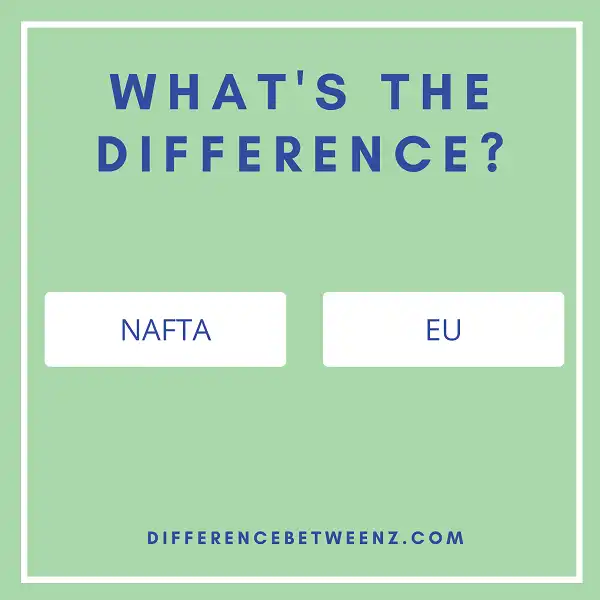Are you confused about the differences between the North American Free Trade Agreement (NAFTA) and the European Union (EU)? You aren’t alone. With more countries engaging in free trade, understanding these two powerhouse agreements’ differences is essential to both businesses and individuals to navigate today’s global trade landscape. So, let’s dive into it! In this blog post, we will discuss why NAFTA and the EU are different from each other and what impacts they have on international economic relations.
What is NAFTA?
- NAFTA, or the North American Free Trade Agreement, is a major force in international commerce and economic relations. NAFTA, enacted in 1994, created a free trade zone between Canada, the United States, and Mexico by eliminating tariffs on most goods traded between these countries.
- NAFTA also supports measures to protect intellectual property rights and labor standards, and promote cooperation on environmental protection. Additionally, NAFTA established procedures for the resolution of disputes regarding NAFTA obligations among all three countries.
- Over its nearly 25-year existence, NAFTA has dramatically increased trade through North America while providing benefits to businesses and consumers alike from Canada, the US, and Mexico.
What is the EU?
- EU stands for European Union, and it is an international organization comprised of 28 countries located in Europe. It was founded in 1993, with the goal to help ensure peace and prosperity for its citizens through cooperation within Europe.
- EU member countries work together to achieve their shared goals by forming intergovernmental agreements on a wide range of topics such as maintaining free trade, implementing environmental regulations, and establishing common laws that govern all EU members.
- EU has made great progress in the past decades regarding these topics, making life better for EU citizens, but also shaping international markets and regulatory standards around the world.
Difference Between NAFTA and EU
NAFTA and the EU have different objectives and approaches to free trade.
- NAFTA was originally created to reduce or eliminate trade barriers between the United States, Canada, and Mexico so that companies operating in these countries can maximize the efficiency of their operations.
- On the other hand, The EU is dedicated to fostering economic cooperation between its members by adopting a unified set of rules for trade and investment on a continental level.
- NAFTA covers goods like cars, agricultural products, energy sources, and some services while the EU covers a much broader range of items including intellectual property rights, company regulations, financial services, and employment standards.
- NAFTA is focused mainly on productivity while the EU takes into account other factors like labor standards and environmental protection.
NAFTA has been criticized because it lacks strong enforcement mechanisms while the EU offers more stringent enforcement measures through supranational institutions like the European Court of Justice.
Conclusion
NAFTA is different from the EU in a number of ways. First, NAFTA is a trade agreement between three countries, while the EU is a political and economic union of 28 member states. Second, membership in NAFTA is voluntary, while membership in the EU is compulsory for countries that meet the criteria to join. Third, the scope of NAFTA covers a wider range of topics than does the scope of the EU. Finally, decision-making in NAFTA is done by consensus among the member states, while decision-making in the EU requires unanimity among all 28 member states.


